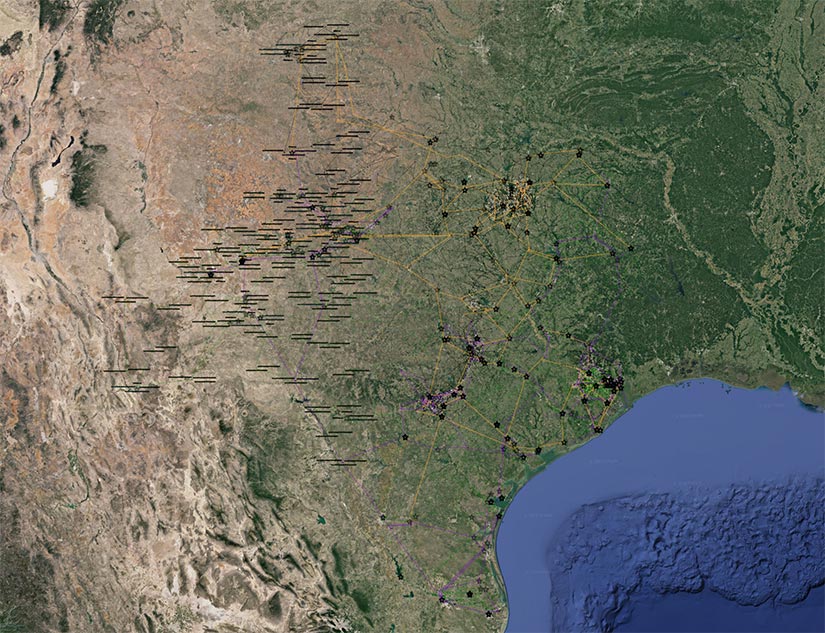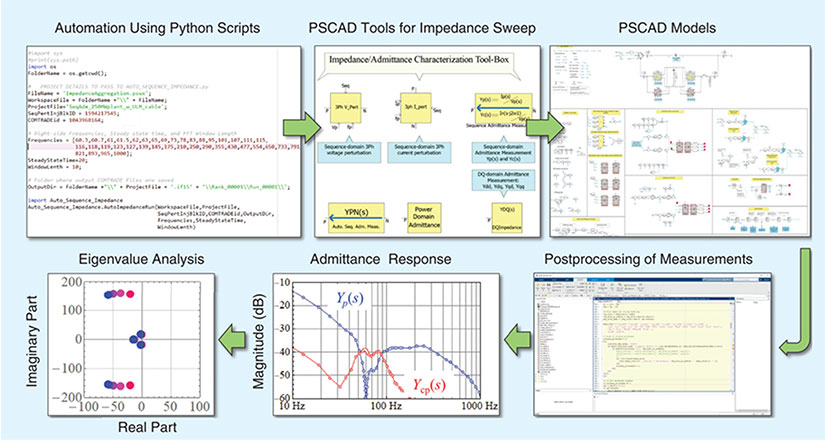NREL Clears Hurdle to Dynamic Stability for Renewables
First-of-Its-Kind Impedance Measurement System at NREL Characterizes Stability of Wind and Solar, Leads to Software Tool for Black-Box Analysis

To strengthen bulk grid stability for highly renewable grids, the National Renewable Energy Laboratory (NREL) has developed an impedance measurement system. The measurement system is a breakthrough capability for understanding how wind, solar, and other modern energy devices interact to affect the grid’s moment-to-moment stability.
The system uses NREL’s 7-megavolt-ampere grid simulator along with a 5-megawatt dynamometer to emulate different grid and power conditions and record the response of the device under test. By sweeping across multiple power frequencies and perturbations, the researchers can uncover a complete picture of the device’s behavior. The team has published initial results of its measurement of a 4-MW wind turbine.
Additionally, the project team has developed a toolkit that is the software analog to NREL’s hardware impedance measurement system—the software performs an impedance sweep on commercial models of devices and outputs performance data that can be integrated into full-scale grid integration studies.
“At the moment, industry does not have a way to know how modern energy resources will impact the system as a whole,” said Shahil Shah, a senior research engineer at NREL and the lead developer on this project. “These capabilities—the hardware measurement system and the software tool—allow a deeper awareness of how we can strengthen the grid.”
New solar and wind devices operate at sub-second timescales, much faster than conventional mechanical resources. As more power electronics are interconnected, the quick and complex signals of these devices create nonlinearities that can result in unwanted and potentially disruptive voltage oscillations—however the exact dynamics that lead to these disruptions are unclear. This is partly because the devices’ technical details are intellectual property and can only be studied as black box models.
The flexibility of NREL’s research tools proves helpful here. “From black-box models of commercial devices to the devices themselves, our capabilities can validate impedance dynamics, which we can use to study bulk grid stability,” Shah said.
Several high-renewable grid systems are already protecting from or preparing for these aberrant power oscillations. NREL is currently working with a few regional grid operators around the world to identify possible sources of instability and opportunities to strengthen their systems.
While the software tool still needs polishing and user-friendly upgrades before a public release, it has led to important results within the lab. In one study led by Shah, NREL compared impedance responses of Type III wind turbines, finding that grid-forming operation reduces risks of undesired oscillations. The results are described in a recent publication, “Control, Operation, and Stability Characteristics of Grid‐Forming Type III Wind Turbines,” which won Best Paper at Renewable Grid Integration Week 2020.
Another application is for the development of new standards. Shah and others are supplying data of impedance behavior for commercial wind turbines to the International Electrotechnical Commission for standard IES TS 61400-21-4 on measurement and assessment of turbine electrical characteristics. Using NREL’s tool, standardized assessment of impedance will allow utilities to fully comprehend the stability effects of additional renewable resources.

As NREL develops the Python-based software for public release, the research team is building out cyber-physical co-simulation capabilities to study stability in a bulk system, integrated environment. Using NREL’s globally unique research infrastructure within the ARIES platform, which will soon include a 19-MVA grid simulator, the co-simulation capabilities will enable integrated analyses of stability on large, diverse grids. As a first step in this direction, NREL is augmenting a synthetic model of the ERCOT grid to study dynamic stability under possible high-renewable scenarios.
Interested in learning more about this research angle? NREL’s work was recently featured in IEEE Electrification Magazine: “Impedance Methods for Analyzing Stability Impacts of Inverter-Based Resources.”
Last Updated May 28, 2025
